When it comes to high-fidelity printing , we will see CMYKRGB, CMYKOGB, CMYKOGV and other color models. The color range of ordinary four-color printing is determined by primary color CMY and its secondary color RGB, because the base ink is impure and the overprint ratio is equal. Influence of factors, secondary color RGB is not high enough in brightness or saturation. If it is replaced by bright R, G, B, O and other base inks, it can effectively expand the printing gamut range. But in the face of numerous color models, how to choose, how to define the color value of the new base ink in each color model?
Although the determination of the base color ink is not the core technology of the high-fidelity printing process, it affects the performance of the entire process. To define the base color ink, it is necessary to carry out detailed analysis according to the color theme to be expressed by the original, the RGB color gamut range and color distribution in the original, and the color value that can be realized by the actual production of the base ink, and then determine the final ink base color, as shown in the figure. 1 is shown. The wrong definition of the base ink will be futile and even counterproductive. It is worth noting here that the high-fidelity printing process is not suitable for all printed originals. In other words, not all printed originals can be significantly improved from ordinary four-color printing to high-fidelity printing. For some manuscripts with rich tone levels, high fidelity printing does not significantly improve its color vividness due to visual effects.
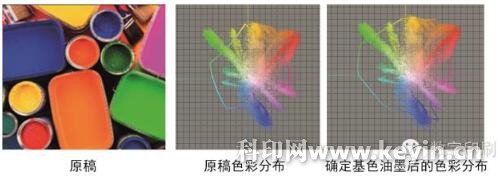 Figure 1 Original and its color distribution map and color distribution after determining the primary color
Figure 1 Original and its color distribution map and color distribution after determining the primary color HP Indigo digital printing machine comes CMYKOGV seven kinds of color printing process using an ink for high fidelity, the color gamut with ordinary four-color gamut comparison 2, R, G, V and other areas with significant color performance Improvement. If our originals need to choose other base inks, they can also be blended with HP Indigo's spot color mixing system.
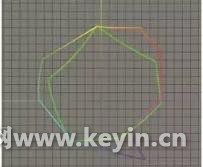 Figure 2 Indigo high-fidelity printing color gamut and ISO four-color printing color gamut contrast
Figure 2 Indigo high-fidelity printing color gamut and ISO four-color printing color gamut contrast After each primary ink is determined, the color management flow method is used to correctly restore the original color: correction, characterization, and conversion.
Correction apparatus comprising a correction, tone correction, is necessary to adjust the device to a steady state, then the TVI (dot gain curve printing network) or the like of each calibration tone gradation. The first problem encountered in multicolor ink system printing is how to set the mesh angles to effectively avoid moiré.
We know that in the four-color ink printing, the C, M, and K three-color plates are set at intervals of 30 degrees, and the visually indistinct Y is arranged at a position 15 degrees apart from other color plates. The commonly used dot angle configuration is For: C15, M75, Y90, K45. If you add RGB three color plates, CMY and RGB complement each other. According to the principle of color separation , in addition to the neutral gray component, the two colors of complementary colors have little chance of overprinting at the same position, while the dark tone is neutral. The gray component can be replaced by the GCR technology into a black version. In theory, the three color plates of RGB adopt the mesh angles corresponding to their complementary colors, which can effectively avoid moiré. However, the angle between the B color plate and the other color plates is 15 degrees, which is easy to produce moiré. It is recommended to set the B color version to other angles according to the actual distribution of the original color, for example: C15, M75, Y90, K45, R15, G75, B75. But no matter what kind of dot angle distribution, it can't ensure that it will never hit the net. Even if the application is mature, the normal four-color printing corner configuration will still have a slight moiré on some images. Of course, you can solve the collision problem by using the FM screening system.
Each of the HP Indigo digital presses has four fixed net angles for four colors. If the base ink is added, it can be assigned to the four fixed net corners according to the complementary color principle. Digital printing Because of the rough dot, etc., in ordinary four-color printing, it is necessary to adjust the mesh angle according to the characteristics of the original, and increase the printing to six-color or seven-color printing. The factors that need to be considered for the adjustment of the dot angle are increased again, and the performance of the overlay dot may be difficult to predict. The effect is that the digital printing is relatively flexible. The one-printing and no-plate-making features allow us to conduct on-site testing, comparison and selection of the dot angle.
High-fidelity digital printing for color tone correction, refer to the TVI curve correction method, involving dot area measurement of RGB and other primary colors, using Exact spot color tone value measurement function.
Characterization is the printing of a color chart on a calibrated device to generate an ICC Profile that represents the state of the device. Different softwares have their own multi-color grids. With Eye-One Profiler, you can customize the multi-color grid table according to your needs. In theory, the maximum ink volume of seven-color printing should be 700%, but due to the limited ink-receiving ability of the paper, the ink volume is too large, resulting in printing failures such as sticky flowers and offset printing. The HP Indigo 5600 digital printing equipment can transfer up to 16 layers of electrons on one side. Ink, and ordinary coated paper has an ink receiving capacity of less than 400%, so the ink amount can be limited to 400% when defining the color chart, avoiding unnecessary printing failure. When Eye-One Profiler software generates ICC, it depends on the actual situation, black version length, maximum ink amount and other parameters.
Next is the color separation conversion, which separates the RGB originals into a high-fidelity color space for printing. At present, there are many color separation software available. Different software, different conversion intentions, GCR and other parameter settings have different processing results for image hierarchy and color gamut color conversion, and the effect is naturally different. Figure 3 is a comparison of the effects of converting RGB originals into ordinary four-color CMYK and high-fidelity CMYKOGV using Alwan's ColorHub.
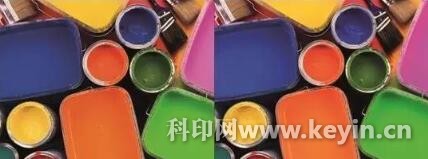 Figure 3 Four-color printing (CMYK mode, see left) and high-fidelity printing (RGB mode, see right) color contrast
Figure 3 Four-color printing (CMYK mode, see left) and high-fidelity printing (RGB mode, see right) color contrast (text
This category is about Makeup Tools, including Beauty Sponges, Brush Cleaner, Makeup Accessories and Makeup Bags . Makeup Sponge is perfect for application of cream or liquid products. The Makeup Mirror is protable for makeup and touch-ups in the outdoors.
The Silicone Brush Cleaner can help you wash your brushes and the Makeup Pouch will help you store your Makeup Brushes and keep the brushes clean.
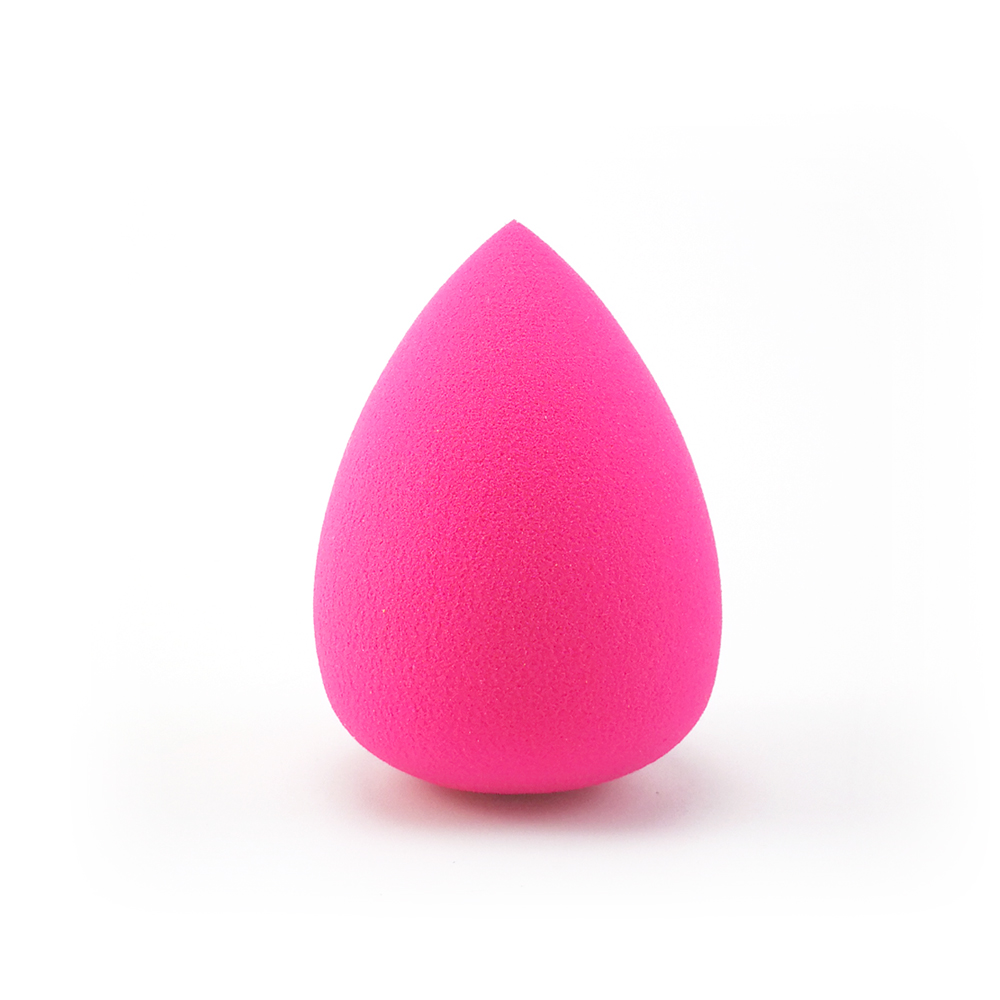
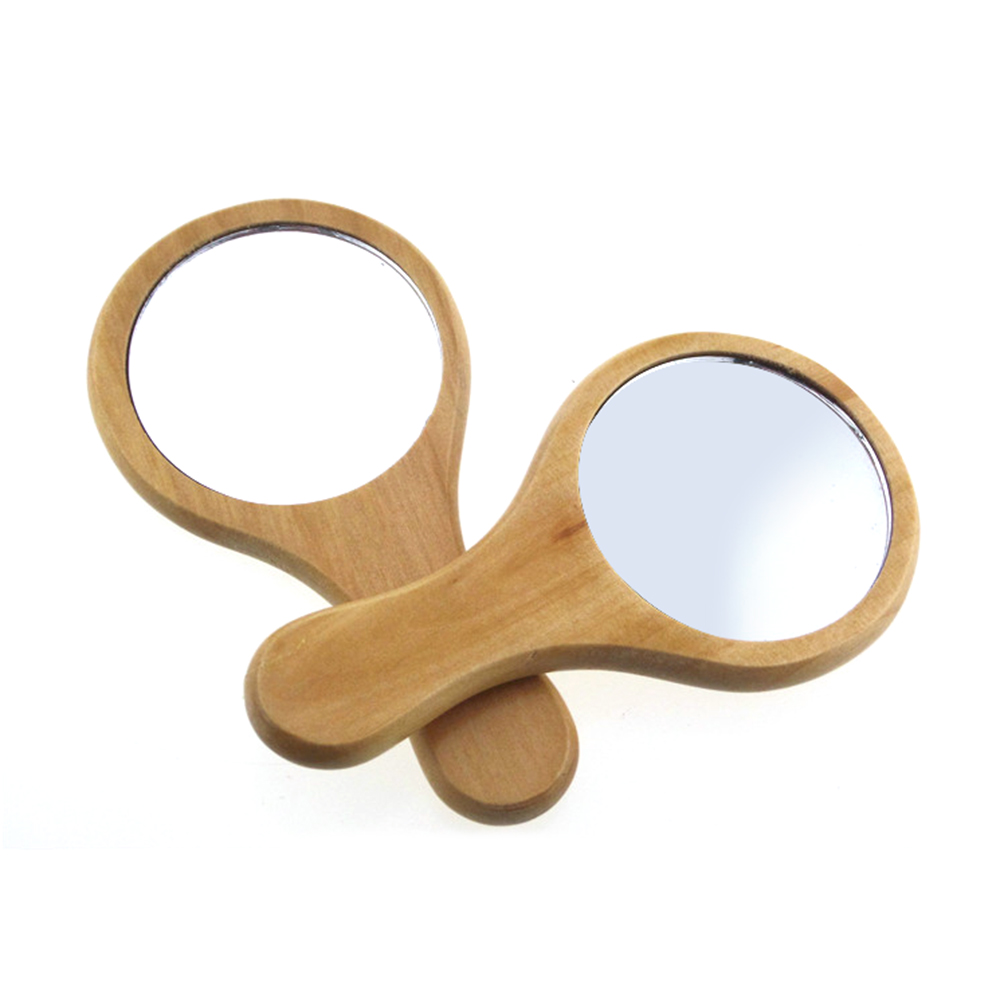
Makeup Tools,Makeup Brush Kit,Brush Cleaning Tool,Makeup Brush Cleaner Tool
SHENZHEN MERRYNICE COSMETICS CO., LTD , https://www.merrynice.com